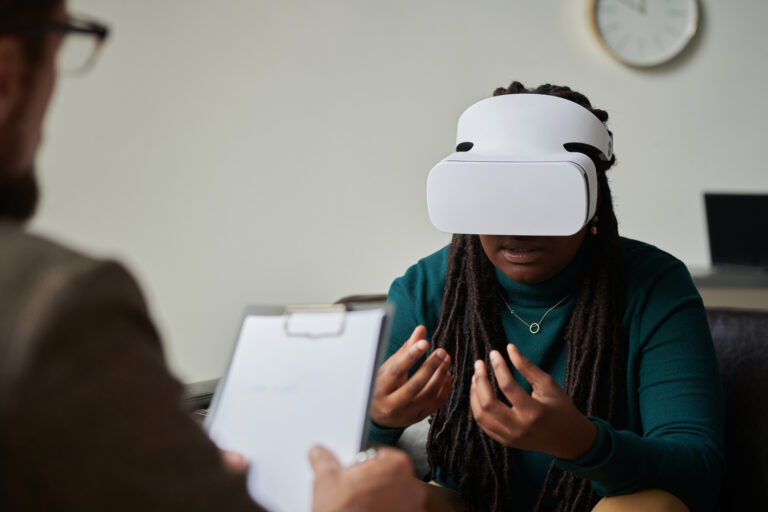The 20th of June was World Refugee Day, reminding us that almost 110 million people all over the world have been forced to flee their homes because of war, violence, conflict, or persecution, the highest number ever recorded. This year’s theme is “Hope away from home”, focusing on the inclusion of refugees in their new locations. An important aspect of inclusion is the possibility to receive help to alleviate suffering from mental health problems. Data shows that newly arrived refugees, and people who have experienced war or other conflict in the previous 10 years. suffer from elevated levels of anxiety, depression, and post-traumatic stress disorder, and that unaccompanied refugees have a tenfold increased risk of suicide. Specific issues related to pre-, peri- and post-displacement have a large impact on refugee mental health and there is a need for adapted and targeted interventions for this group.
Another alarming fact is research showing that refugees underutilize mental health care services, highlighting that there is a dire need to provide new alternatives and increase the probability that solutions for better mental health reach this heterogeneous group. We already know that specific treatment methods such as Cognitive Behavior Therapy (CBT) and specific psychosocial interventions can be effective in the treatment of post-traumatic stress, anxiety and depression in distressed refugees and asylum-seeking populations, and that culturally adapted treatments lead to better outcomes. Research studies also indicate that internet-based interventions can be a viable option for migrants, refugees, and marginalized groups. Studies on internet-based treatment have a history that goes back over 20 years, with more than 300 published studies, and the evidence for providing effective interventions using digital tools is strong.
The Power of Digital Mental Health Alternatives for Refugees and Marginalized Groups
Digital mental health alternatives have several advantages. They can be distributed globally, delivered in settings where face-to-face options are difficult to deliver, provide wide access to self-help material, and be distributed in many languages and adaptations for diverse populations. One initiative targeting this is the SAHA-project, a collaboration between four Swedish Universities with the focus on developing and evaluating digital interventions for the assessment and treatment of refugees and migrants who speak Arabic or Dari/Farsi. The project highlights the importance of digital inclusion and using technology for better reach and a more equal care, as between 2015-2020, Sweden received approximately 275 000 refugees, many unaccompanied and almost half of them were under the age of 18.
The project group has so far developed a digital assessment procedure (i-TAP) to detect mental health symptoms among refugees, and treatment programs for mild to moderate mental health problems for Arabic and Dari/Farsi speaking refugees and migrants. The treatment programs were based on online material that had been proven effective in earlier studies, and the material has been further developed and culturally adapted. The treatment programs have been tested in two pilot studies, showing that they can be effective for those that comply to treatment, but that there are issues regarding recruitment, compliance, and dropout that are difficult to handle. Currently, an ongoing study with global recruitment is conducted, testing the possibilities of providing a digital mental health intervention for refugees all over the world.
Another important part of the project is examining the possibilities for dissemination and implementation, addressing stakeholder perspectives and facilitators/barriers for integration into routine care. International research shows that barriers such as language difficulties, stigma around mental illness, access to effective interventions, cultural differences, and aggravating circumstances within healthcare systems, negatively affect access to effective care. There are also specific barriers connected to digital health among culturally and linguistically diverse (CALD) populations, which apart from refugees also include migrants, ethnic minorities, and indigenous people, that are important to address. That is why we need to identify these barriers and facilitating circumstances within existing systems, and focus on the use and research on specific implementation frameworks and strategies for the integration of digital interventions for marginalized groups in routine care. Stakeholder perspectives and dialogue are crucial to achieve this change.
There is hope that we can find new solutions for marginalized groups using digital mental health tools and that the development of digital solutions can be inclusive. The research on digital interventions for refugee mental health also highlights the possibilities for international collaboration and provision, across borders and organizations. There are several ongoing interesting projects such as the Digital MHPSS initiative by the Red Cross, creating a toolbox for the development of digital MHPSS-interventions, and the UNICEF mental health innovation portfolio in 22 countries with more than 80% of the solutions classified as digital mental health interventions.
Websites and resources
- https://liu.se/en/research/saha
- https://pscentre.org/what-we-do/digital-mental-health-and-psychosocial-support-mhpss/
- https://www.linkedin.com/pulse/7-emerging-trends-bringing-mental-health-services-closer-/
References and recommended reading
- Andersson, G., Titov, N., Dear, B. F., Rozental, A., & Carlbring, P. (2019). Internet-delivered psychological treatments: from innovation to implementation. World Psychiatry, 18, 20–28.
- Derr, A. S. (2016). Mental Health Service Use Among Immigrants in the United States: A Systematic Review. Psychiatric Services, 67(3), 265–274. https://doi.org/10.1176/appi.ps.201500004
- Hall, G. C. N., Ibaraki, A. Y., Huang, E. R., Marti, C. N., & Stice, E. (2016). A Meta-Analysis of Cultural Adaptations of Psychological Interventions. Behavior Therapy, 47, 993–1014.
- Lindegaard, T., Wasteson, E., Demetry, Y., Andersson, G., Richards, D., & Shahnavaz, S. (2022). Investigating the potential of a novel internet-based cognitive behavioural intervention for Dari and Farsi speaking refugee youth: A feasibility study. Internet Interventions, 28, 100533.
- Meurling, J., Rondung, E., Leiler, A., Wasteson, E., Andersson, G., Richards, D., … Bjärtå, A. (2023). An online tiered screening procedure to identify mental health problems among refugees. BMC Psychiatry, 23, 7.
- Nocon, A., Eberle-Sejari, R., Unterhitzenberger, J., & Rosner, R. (2017). The effectiveness of psychosocial interventions in war-traumatized refugee and internally displaced minors: systematic review and meta-analysis. European Journal of Psychotraumatology, 8, 1388709.
- Tinghög, P., Malm, A., Arwidson, C., Sigvardsdotter, E., Lundin, A., & Saboonchi, F. (2017). Prevalence of mental ill health, traumas and postmigration stress among refugees from Syria resettled in Sweden after 2011: a population-based survey. BMJ Open, 7, e018899.
- Turrini, G., Purgato, M., Acarturk, C., Anttila, M., Au, T., Ballette, F., Bird, M., Carswell, K., Churchill, R., Cuijpers, P., Hall, J., Hansen, L. J., Kösters, M., Lantta, T., Nosè, M., Ostuzzi, G., Sijbrandij, M., Tedeschi, F., Valimaki, M., … Barbui, C. (2019). Efficacy and acceptability of psychosocial interventions in asylum seekers and refugees: systematic review and meta-analysis. Epidemiology and Psychiatric Sciences, 28(4), 376–388. https://doi.org/10.1017/s2045796019000027
- Whitehead, L., Talevski, J., Fatehi, F., & Beauchamp, A. (2023). Barriers to and Facilitators of Digital Health Among Culturally and Linguistically Diverse Populations: Qualitative Systematic Review. Journal of Medical Internet Research, 25, e42719. https://doi.org/10.2196/42719





